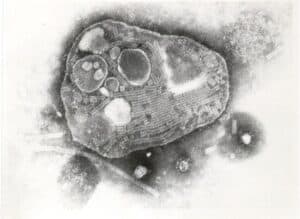According to WOAH, Rinderpest is believed to have originated in Central Asia and quickly spread across the continent and into Europe, facilitated by trade and migration routes. Although reports of the disease also surfaced in the Americas and Australia, its prevalence was comparatively lower.
The rapid spread of this highly contagious disease led to devastating famines in Africa and hindered agricultural progress in Asia. Households that relied on livestock for sustenance and livelihood bore the heaviest burden.
Recognizing its impact on livestock, scientists and veterinarians began exploring methods to combat rinderpest. In 1744, significant strides were made in the fight against rinderpest as vaccination efforts were initiated in both the Netherlands and England.
In the late 19th century, a devastating rinderpest outbreak in Ethiopia, known as the “Great Ethiopian Famine“, resulted in a widespread catastrophe. The death rate among livestock was alarming – approximately 90% of the country’s plow oxen population perished quickly. This shook the local economies and led to severe food shortages and famine conditions for humans dependent on these animals for sustenance.
The rinderpest outbreak in Belgium in 1920 renewed global determination to tackle this urgent issue, resulting in collaborative actions worldwide. However, it was only in the 1990s that a concerted global effort was made to eradicate the disease. This effort involved mass vaccination campaigns, strict quarantine measures, and the development of diagnostic tests to detect the virus.
In 2011, the World Organisation for Animal Health (WOAH) made a historic announcement during its 79th General Session – rinderpest had been eradicated worldwide. This made rinderpest the second disease to be eradicated, after smallpox.
The eradication of rinderpest was a significant milestone for global veterinary science and public health. It proved that with concerted efforts, it is possible to eliminate diseases threatening livestock populations.
This victory provided hope and set a precedent for future endeavors to control and eradicate similar disorders.
